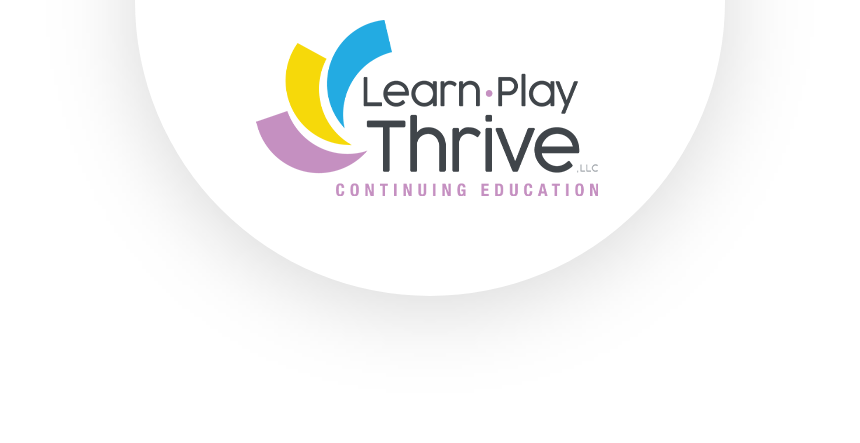Rethinking Hand-Over-Hand Assistance for Autistic Kids

Somewhere along the line, many of us got the idea that our goal as therapists is to get our kids to reach their therapy goals. With that in mind, many of us dive in and do what it takes. Do we need to tell them what to do? Show them? Move their bodies for them? With the mission to overcome barriers and teach our kids new skills, many dedicated therapists will do any number of these things, for as long as it takes, to help our clients meet their goals.
I’ve personally used hand-over-hand (using my hands to move a child’s hands) to teach kids how to do something they’re not yet coordinated enough to do by themselves. I’ve used it to teach them something when they aren’t able to learn from the other types of instructions I know how to give. And, somewhat reluctantly, I’ve used it when they just won’t get started with trying the activity.
Have you done these things too? Is there a little voice in the back of your head that sometimes suggests that this might not be the most effective approach? That it might not even be the most ethical?
If you don’t have a toolbox full of autism-specific strategies, letting go of hand-over-hand can feel scary. After all, when your client can’t or won’t follow the instructions you’re giving, what exactly do you do?
Keep reading to learn three reasons why it’s worth letting go of hand-over-hand assistance in most circumstances, and how to figure out what new strategies you need to learn to use instead to keep therapy moving forward.
3 Reasons Not to Use Hand-Over-Hand Assistance for Autistic Kids
1) Autistic Kids learn from routines. One thing we know about the learning style of autistic kids is this: they form routines quickly, and once those routines are formed, they can be hard to break. When you teach a child a new skill with hand-over-hand, they are learning how to do that skill with someone moving their hands. This is a much harder type of prompt to fade out than other types of prompts, because most likely the child isn’t really learning, they are simply having their hands moved. If we are teaching a new skill for independence, this is not where we want to start.
2) Autistic Kids often struggle with initiation. Executive functioning skills are often impaired for autistic kids. This means that it can be hard for them to see where an activity starts, what the steps are, and when the activity will be finished. Additionally, they often have difficulty with taking the first step to initiate and activity. If you are helping them initiate by moving their bodies, you aren’t helping them to see the steps, you are jumping right past that skill by doing it for them. The problem is, if you want the child to be truly independent with whatever you’re trying to teach, using hand-over-hand isn’t going to help them get there. And it’s not going to help you learn what they really need from so that they can eventually complete the activity independently.
3) People have the right to control their own bodies. Upholding a client’s bodily autonomy is written into my code of ethics as an occupational therapist.
Let me put you in their shoes for a moment. Let’s imagine it’s your night to do the dishes. But you are really tired, and you just don’t feel like it. So you tell yourself, “It doesn’t really matter if I leave these until tomorrow,” and you decide not to do them.
But your partner does not agree. They try every tactic they know to get you to wash the dishes: they beg, threaten, offer you rewards. Nothing works. So they come and take your hands and start using them to wash the dishes. Not cool, right? You get to choose to say no, even if someone more well rested than you might tell you it’s not a very good choice.
If our kids aren’t doing an activity because they don’t find it interesting, aren’t motivated, or can’t see why it’s important, moving their hands for them is not just poor clinical skills on our part, it violates our clients’ rights to autonomy. And respect for autonomy is written into the OT code of ethics in Principle 3: “Occupational therapy personnel shall respect the right of the individual to self-determination, privacy, confidentiality, and consent.”
There Are Some Exceptions!
Now if you have a client who is actively working on a motor skill that they want to accomplish but don’t quite have the skills yet, it may be okay to jump in and carefully help them with their explicit permission. In these cases, I try to hold the object with them rather than holding their hand. For instance, after getting their permission, I’ll grab the puzzle piece together with them (not their hand) and help them position it in the puzzle. It’s important to note here that I’m helping the child meet their own goal, not forcing them to work towards a goal I’ve set for them that they don’t want to try.
There are also plenty of moments that parents just have to move their kids’ bodies. The kid has to get in the car. They have to have their diapers changed. They have to fasten their seatbelts. Teeth must get brushed. Parents must get out the door to work. There are some real non-negotiables in their lives that their kids may not understand or be on board with. I try to leave these actions to the parents while I support them in strategizing how to minimize the struggle and increase the child’s understanding and cooperation when possible.
If Not Physical Assistance, What Can You Do Instead?
Knowing what strategies to use instead of hand-over-hand assistance depends on what the problem is that you’re trying to solve. Here are a few examples of common reasons therapists use hand-over-hand assistance, and some ideas about what you can try instead.
Problem: The child is not initiating the activity.
Possible solution: Try handing the child the material they need to begin (their pencil, the crayon, a ball, a puzzle piece, their jacket, etc.). Make the task and the instructions as simple and clear as possible so that once the material is in their hand it is easy for them to use it successfully. Sometimes just handing our kids something can give them a clear cue to initiate, and it’s easy to fade this out over time.
Problem: The child doesn’t understand the instructions.
Possible solution: Use visual instruction and structure to clarify the instructions within the activity. We know that visual learning is a relative strength for our Autistic Kids. But relative strength doesn’t mean that they all understand symbolic pictures or written instructions.
You should be sure that you know how to use visual instructions at every level: materials, objects, photographs, symbolic picture, picture with words, and written instructions. That way you can choose a type of instruction that will make sense to the child even if they are frustrated or having a bad day.
We also know that part of the autism learning style is a difference in central coherence (e.g. seeing the details before the big picture). This means that you’ll want to set up your activity using appropriate structure so that it is obvious to them what they are supposed to do with the materials you are providing.
You’ll also want to have a very clear prompt hierarchy for yourself for teaching that involves demonstration, visual prompting, tailored language, and careful prompt fading.
Problem: The child isn’t motivated to try the activity
Possible solutions: Become curious about what the child is interested in and what they are ready to learn. If the activity is a put-in activity and the child loves sounds, try doing the activity using a coffee tin where they can hear the material “ding” at the bottom. If it’s math and the child loves Minecraft, have the child work out a math problem related to something they’d like to build in Minecraft. Be clear with yourself about what the goal is, and be open to adjusting the details of the activity so that it is truly within the scope of the child’s interests.
Another possible solution is showing the child that the activity will, eventually, be finished. Because Autistic kids often have trouble looking at an activity and seeing when it will be finished, they often don’t want to get started. I mean, would you want to go to a hard job if no one would tell you when you’d get off or exactly how much work you had to do that day?
Sometimes showing finished means reducing the materials, like, say, only having 5 beads on the table for the child to string. And sometimes this just means making it more visually clear how and when the child will be finished with the activity.
You Can Do It!
When you learn to teach using visual instructions, structure, and thoughtful prompting, it can increase your confidence and efficacy. If engaging in power struggles and moving a child’s body when they clearly aren’t on board leaves you feeling not-so-ethical, you’ll also be happier when you leave that strategy behind.
If this highlighted some blank spots in your tool box, checkout our flagship course The Learn Play Thrive Approach to Autism. In this course we teach therapists exactly how to use informal assessment to develop the right goals and intervention strategies; how to prompt and teach for initiation, engagement, independence, and flexibility; how to use structure and visual instructions at every level; and so much more.



